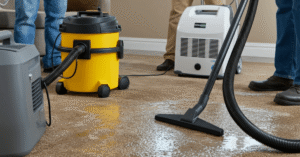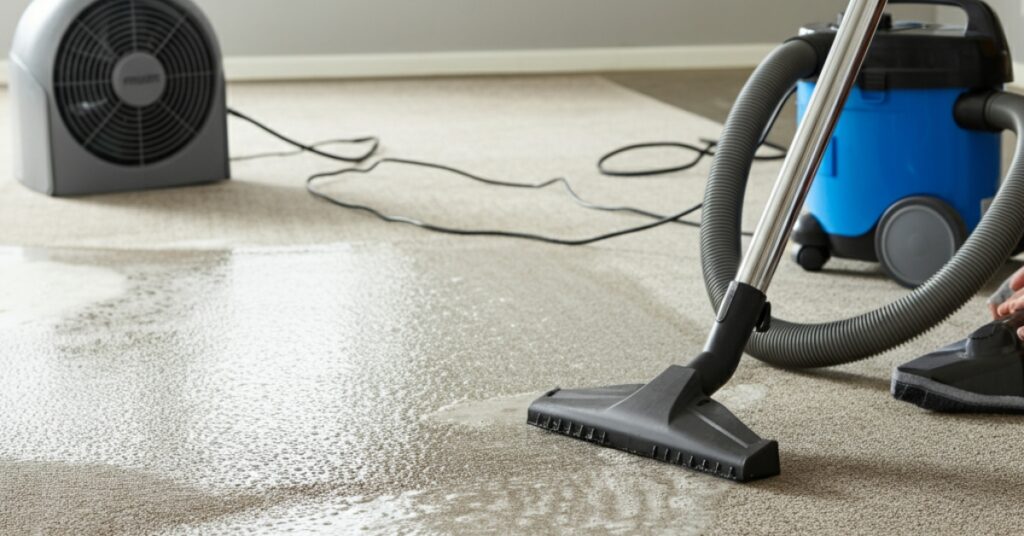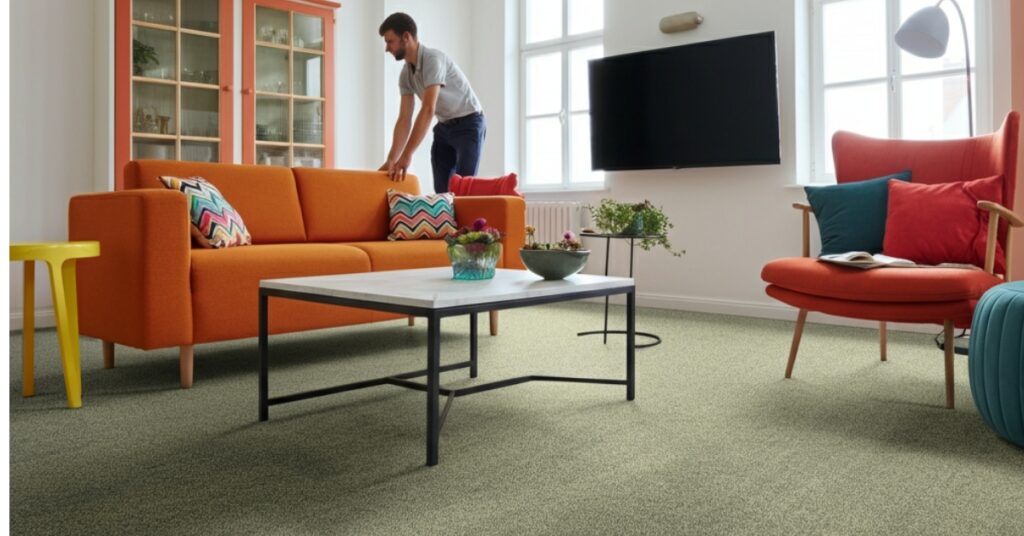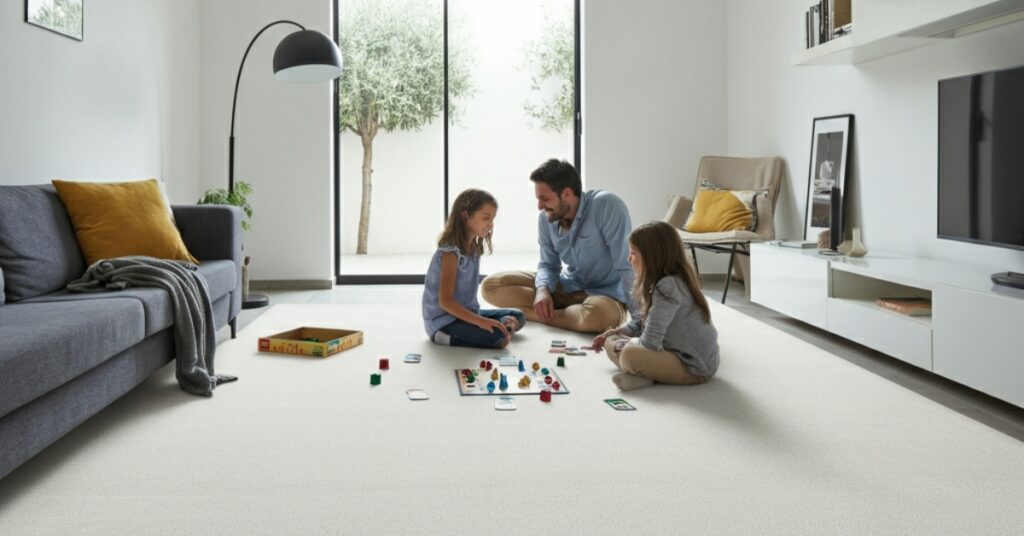As an Amazon Associate, I earn from qualifying purchases.
Discovering a wet carpet in your home can be incredibly frustrating, whether it’s from a minor spill or a major leak. Knowing what to use dehumidifiers to dry a carpet is crucial for preventing long-term damage like mold and mildew. This process involves more than just placing a machine in the room; it requires proper setup and technique to ensure the carpet dries quickly and thoroughly. Fortunately, with the right approach, a dehumidifier can be your most effective tool in this situation.
Using a dehumidifier correctly will not only save your carpet but also protect the air quality in your home. This process works by drawing excess moisture from the air, which in turn encourages the water trapped in your carpet fibers to evaporate more rapidly. By understanding the specific steps to take, you can efficiently manage the drying process and avoid the costly consequences of lingering dampness.
Understanding How Dehumidifiers Work on Wet Carpets
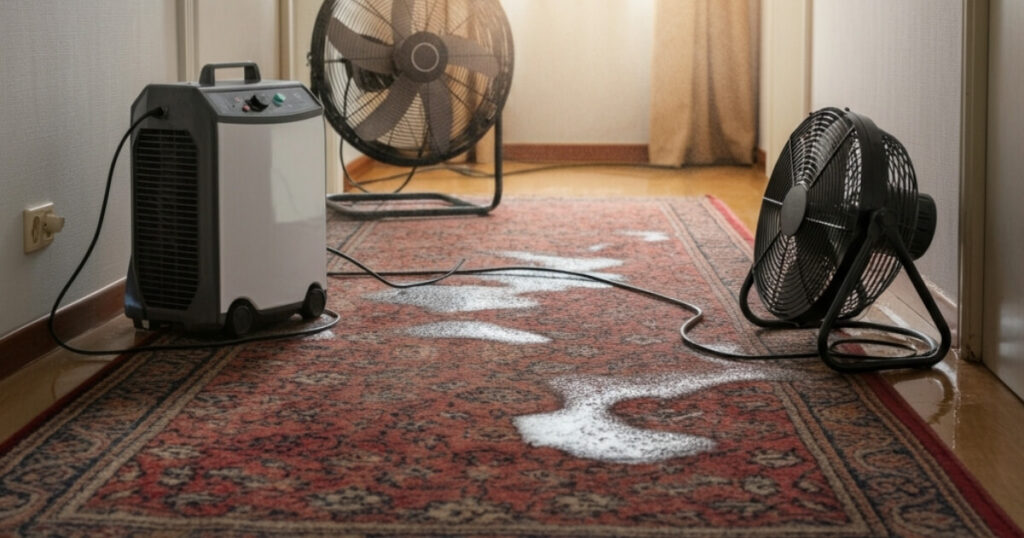
A dehumidifier is an essential appliance for tackling a wet carpet because it directly addresses the root cause of slow drying: high humidity. When a carpet is soaked, the water evaporates into the surrounding air, increasing the room’s humidity level. Consequently, as the air becomes more saturated, the evaporation process slows down dramatically, leaving your carpet damp for an extended period. This creates the perfect breeding ground for mold and mildew, which can cause unpleasant odors and health issues.
A dehumidifier works by pulling in this moist air, cooling it to condense the water vapor, and then collecting the resulting water in a tank or draining it away. Afterward, the device releases the drier air back into the room. This continuous cycle lowers the overall humidity, which significantly speeds up the natural evaporation process from the carpet. Therefore, using a dehumidifier is a highly effective strategy for drying a wet carpet quickly and preventing secondary damage.
Preparing Your Carpet for Dehumidification
Remove Excess Water First
Before you even think about turning on the dehumidifier, you must remove as much standing water as possible. This initial step is critical because a dehumidifier is designed to handle moisture in the air, not large puddles of water on a surface. Leaving excess water will prolong the drying time and reduce the machine’s efficiency. You can start by using thick towels to blot the area, pressing down firmly to absorb the moisture.
For larger spills or significant flooding, a wet-dry vacuum is an invaluable tool. It can extract a substantial amount of water from deep within the carpet fibers and padding, which is something towels alone cannot achieve. Removing this bulk water upfront allows the dehumidifier to work on the remaining dampness more effectively. Therefore, spending time on this preparation will ultimately speed up the entire drying process.
Increase Air Circulation in the Room
Proper air circulation is another key factor in successfully drying a wet carpet. Stagnant air traps moisture, but moving air helps carry it away from the carpet’s surface, allowing the dehumidifier to capture it more easily. To achieve this, open any available windows and doors to create a cross-breeze, provided the weather outside isn’t humid or rainy. If outdoor conditions are damp, keep the windows closed to prevent more moisture from entering the room.
In addition to natural ventilation, use fans to boost airflow. Position box fans or oscillating fans to blow air directly across the surface of the wet carpet. This targeted airflow accelerates evaporation, working in tandem with the dehumidifier to dry the area faster. You should also turn on your home’s HVAC system fan to help circulate air throughout the space, further aiding the dehumidification process.
Correctly Positioning and Setting Up the Dehumidifier
Optimal Placement for Maximum Efficiency
Where you place the dehumidifier is just as important as turning it on. For the best results, position the unit as close to the center of the wet area as possible. This central location allows it to draw in moist air evenly from all sides. If the entire room is affected, placing the dehumidifier in the middle of the room is the ideal strategy. Make sure there is enough space around the machine for air to flow freely into its vents.
Avoid placing the dehumidifier in a corner or against a wall, as this can obstruct airflow and reduce its effectiveness. The goal is to create a continuous cycle of air moving through the device. If the wet area is very large, you might need more than one dehumidifier. In that case, space them out evenly to cover the entire carpeted area for consistent and efficient drying.
Choosing the Right Settings
Most modern dehumidifiers come with adjustable settings that you can tailor to your needs. When drying a carpet, it’s best to set the humidity level, or humidistat, to a low setting, typically between 30% and 50%. This signals the machine to run continuously until the room’s humidity drops to that target level, which is optimal for quick drying. Some models also have a “continuous” or “turbo” mode designed for maximum moisture removal.
Also, be mindful of the room’s temperature. Dehumidifiers operate most efficiently in warmer temperatures, usually above 65°F (18°C). If the room is cold, the coils inside the machine can frost over, hindering its performance. If necessary, use a small, safe space heater to slightly raise the room temperature, but be sure to keep it a safe distance from the wet carpet and the dehumidifier itself.
Maintaining the Dehumidifier During the Drying Process
Regularly Empty the Water Tank
A dehumidifier can’t remove moisture from the air if its collection tank is full. Many units will automatically shut off when the reservoir reaches its capacity to prevent overflows. For this reason, you need to check the water level frequently and empty the tank as soon as it gets full. In the initial stages of drying a very wet carpet, you may need to empty it every few hours.
If your dehumidifier has an option for continuous drainage, this is the most convenient solution. You can attach a hose to the unit and direct it to a nearby floor drain or a sink. This setup allows the machine to run uninterrupted without you needing to manually empty the water. This is particularly useful for large-scale drying projects or if you need to leave the dehumidifier running overnight.
Keep the Filters Clean
The performance of your dehumidifier also depends on its filters being clean. A dirty or clogged filter restricts airflow, forcing the machine to work harder and less efficiently. Before you begin the drying process, check the filter and clean or replace it if necessary. Most dehumidifiers have a washable filter that you can rinse with water and let dry before putting it back.
During a prolonged drying job, it’s a good idea to check the filter every couple of days. Dust and other airborne particles can accumulate quickly, especially when you have fans running to circulate air. A clean filter not only improves the dehumidifier’s efficiency but also helps maintain better air quality in your home by trapping dust and allergens.
Checking Your Carpet for Dryness
Once the dehumidifier has been running for a while, you will need to check the carpet to see if it is completely dry. The surface might feel dry to the touch, but moisture can still be trapped deep within the fibers and padding. To check more thoroughly, press a dry paper towel firmly into the carpet. If it comes up damp, you need to continue the drying process.
You should also pay attention to any musty odors. A lingering damp smell is a clear sign that the carpet is not fully dry and that mold or mildew might be starting to grow. Keep the dehumidifier and fans running until the carpet is dry all the way through and any unpleasant odors have disappeared. Rushing this final stage can undo all your hard work, so be patient and thorough.
What to Do After Your Carpet Is Dry
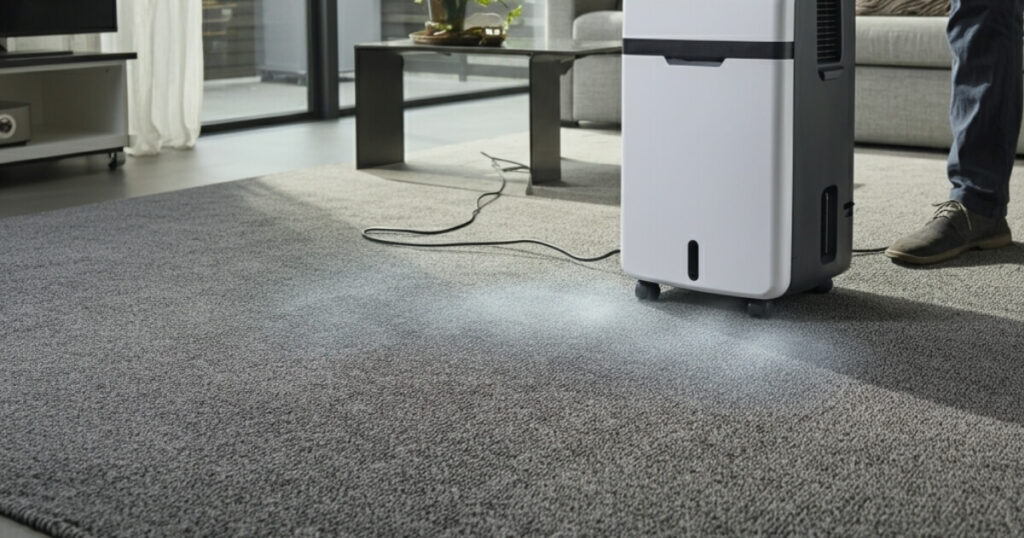
After you’ve confirmed your carpet is completely dry, a few final steps will help restore it to its original condition. First, vacuum the entire area thoroughly. This will help lift the carpet fibers, which may have become matted down during the wetting and drying process. It also removes any dirt or debris that may have settled on the surface.
If the water that soaked the carpet was not clean, you should consider having the carpet professionally cleaned. A professional cleaning will sanitize the area, removing any lingering bacteria or contaminants. This is especially important if the water came from a flood or a sewage backup. Taking this extra step ensures your home is not only dry but also clean and healthy.
Want to go beyond the basics? This guide dives deeper: Wet Carpet Not Drying?
FAQs About Using a Dehumidifier to Dry a Carpet
1. How long does it take to dry a carpet with a dehumidifier?
The time it takes to dry a carpet with a dehumidifier can vary significantly, typically from 10 hours to a few days. The exact duration depends on several factors, including the size of the wet area, how saturated the carpet is, the capacity of the dehumidifier, and the room’s temperature and airflow. For a small, damp patch, it might only take a day, but for a large, soaked area, expect it to take longer.
2. Can I use a dehumidifier on any type of carpet?
Yes, you can use a dehumidifier to dry most types of carpets, including wool, nylon, and polyester. The process of removing moisture from the air is safe for all carpet materials. However, for delicate or natural fiber carpets like wool, it’s important to ensure the drying process is gradual and not too aggressive to avoid potential shrinkage or damage.
3. Will a dehumidifier kill mold on a carpet?
No, a dehumidifier will not kill existing mold, but it plays a critical role in preventing mold growth. Mold needs moisture to survive, and by lowering the humidity and drying the carpet, a dehumidifier creates an environment where mold cannot thrive. If you already have mold, you will need to treat it with a specialized mold remover after the carpet is completely dry.
4. How do I know what size dehumidifier I need?
The size of the dehumidifier you need depends on the size of the room and the level of dampness. Dehumidifier capacity is measured in pints of moisture removed per day. For a moderately damp room up to 500 square feet, a 30-pint unit is often sufficient. For larger or very wet spaces, you may need a 50-pint, 70-pint, or even multiple units to effectively dry the area.
5. Can I leave a dehumidifier running overnight?
Yes, it is generally safe to leave a modern dehumidifier running overnight, especially if you are dealing with a very wet carpet. Most units have an automatic shut-off feature that turns the machine off when the water tank is full, preventing overflows. If you use the continuous drain function, you can let it run without interruption.
As an Amazon Associate, I earn from qualifying purchases.

